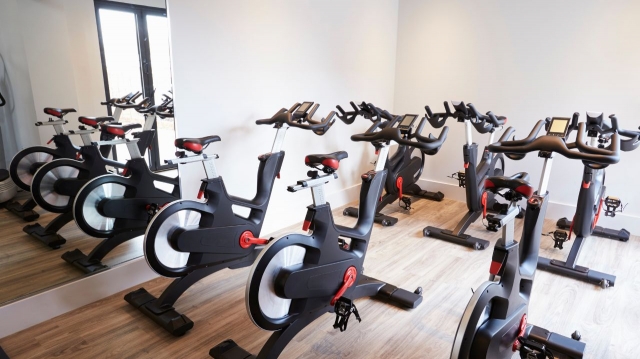For many in Thailand, an exercise bike is an excellent investment for a home gym. It offers a convenient, low-impact cardio workout that's perfect for escaping the heat and traffic. But as you start shopping, you'll quickly realize that the exercise bike price varies dramatically. It's not uncommon to see models ranging from a few thousand baht to over 100,000 baht. This significant price difference can be confusing, and it's essential to understand what factors contribute to the cost to ensure you're getting the best value for your money.
The price of an exercise bike is a direct reflection of its type, features, build quality, and brand reputation. By breaking down the different categories and the key components that drive the cost, you can make a confident and informed purchase.
Exercise Bike Price Tiers in Thailand
Exercise bikes can be divided into three general price tiers. Each tier caters to a different user, from the casual rider to the serious cyclist.
Entry-Level Bikes (Approx. THB 3,000 - THB 15,000)
This is the most accessible category and a great starting point for beginners or those with a very limited budget.
- Who it's for: Casual users, those on a budget, or individuals looking for a compact and convenient way to get some exercise.
- Key Features: These bikes typically have basic features, such as manual resistance, a simple console displaying time, speed, and distance, and a light flywheel. They are often foldable and have a smaller footprint, making them ideal for small condos or apartments.
- Limitations: The build quality may be less durable, and the ride can feel less smooth than more expensive models. They may not be suitable for intense, prolonged use.
Mid-Range Bikes (Approx. THB 15,000 - THB 50,000)
This is the most popular price range for home users, offering a significant jump in quality, features, and durability.
- Who it's for: Regular users, those who plan to ride several times a week, or households with multiple people using the bike.
- Key Features: Mid-range bikes often feature magnetic resistance, which is quieter and smoother than manual resistance. They have a heavier flywheel for a more fluid motion, and consoles with a wider variety of pre-set workout programs. Many in this tier offer adjustable seats and handlebars for a more customized and comfortable fit.
- Benefits: These bikes provide a much more comfortable and stable ride, making them suitable for longer and more intense workouts. The improved components also mean they are built to last longer.
High-End Bikes (Approx. THB 50,000+)
This category includes premium, commercial-grade bikes that are built for performance and an immersive user experience.
- Who it's for: Serious cyclists, fitness enthusiasts, or anyone who wants a top-of-the-line machine with advanced technology and professional-grade components.
- Key Features: High-end bikes often feature very heavy flywheels, sophisticated magnetic resistance systems, and robust frames built for heavy use. They typically come with large, high-definition touchscreens that offer on-demand classes, virtual scenic rides, and seamless app integration (e.g., Zwift).
- Investment: These bikes are a serious investment but offer an unparalleled workout experience, durability, and a wide range of features to keep you motivated for years.
What Factors Affect the Cost of an Exercise Bike?
The final price of an exercise bike is a sum of its parts. Here is a breakdown of the key components that drive the cost.
- Type of Bike
The type of exercise bike you choose is the first and most significant factor in its price.
- Upright Bikes: These are generally the most affordable and common type. They mimic the feel of a road bike and are great for general fitness.
- Spin Bikes: Designed for high-intensity training, spin bikes often have a heavier flywheel and a more aggressive riding posture. They can range from budget-friendly options to very expensive, high-performance models used for studio classes.
- Recumbent Bikes: Recumbent bikes feature a chair-like seat with back support, making them very comfortable and excellent for those with back or joint issues. Their larger frames and more complex design often make them slightly more expensive than basic upright bikes.
- Air Bikes (Fan Bikes): These bikes use a large fan for resistance, and their price is often tied to the durability of the frame and the quality of the dual-action handlebars that provide a full-body workout.
- Resistance System
The resistance mechanism is crucial for the smoothness, noise level, and overall feel of the bike.
- Manual Friction Resistance: Found on most entry-level spin bikes, this system uses a pad that presses against the flywheel. It's the most basic and affordable but can be noisy and requires periodic pad replacement.
- Manual Magnetic Resistance: This system uses magnets to create resistance, which is much quieter and smoother than friction. The resistance is adjusted manually via a knob. This is a common feature on many entry-level and mid-range bikes.
- Electronic Magnetic Resistance (ECB): This system is a step up. It uses a motor to move the magnets, allowing you to change resistance levels from the console with the push of a button. It is a very smooth and quiet system found on most mid-range and high-end bikes.
- Dynamic Resistance (Air Bikes): The resistance on an air bike is directly tied to your effort. The faster you pedal, the more resistance the fan creates. This is a simple but highly effective system that contributes to a challenging workout.
- Flywheel Weight
The flywheel is the weighted wheel that spins as you pedal. The weight of the flywheel directly impacts the smoothness of the ride.
- Lighter Flywheels (under 10 kg): Found on entry-level bikes, these can result in a choppier, less fluid motion, especially during transitions in speed.
- Heavier Flywheels (15 kg+): Found on mid-range and high-end bikes, these provide more inertia, creating a smooth, consistent, and stable ride that feels much more like a real bicycle.
- Console and Connectivity
The technology integrated into the bike's console can dramatically increase its price.
- Basic Consoles: These are found on most entry-level bikes and simply display key metrics like time, distance, and calories.
- Advanced Consoles: Mid-range bikes often have a wider array of pre-set programs, a backlit display, and sometimes a heart rate monitor.
- Interactive Consoles: Premium bikes, like those from Technogym and NordicTrack, have large touchscreens with integrated software for streaming live and on-demand classes. This technology can make a bike significantly more expensive, especially if there is an additional monthly subscription fee for the content.
- Brand Reputation and Build Quality
The brand name itself is a good indicator of a bike's price and quality. Established international brands like Schwinn, Horizon, and Matrix are known for their durable components, ergonomic design, and comprehensive warranties. In contrast, many budget-friendly brands available on online marketplaces in Thailand offer a lower price point but may have less durable components and limited after-sales support.
Conclusion
The exercise bike price in Thailand is determined by a combination of factors, from the type of bike and its resistance system to its flywheel weight and technological features. For a beginner or casual user, a bike in the THB 3,000-15,000 range can be a great starting point. However, if you are looking for a more stable, comfortable, and durable machine for frequent use, investing in a mid-range bike (THB 15,000-50,000) is often a wiser long-term decision. For the most serious cyclists and those who prioritize technology and premium performance, the high-end bikes offer a gym-quality experience right in your home. By understanding this pricing breakdown, you can confidently choose an exercise bike that perfectly matches your fitness needs and budget.
FAQs
- Is it possible to find a good quality exercise bike for under THB 10,000?
Yes, it's possible to find entry-level bikes in this price range from local distributors and online sellers in Thailand. While they may lack the features and durability of more expensive models, they can be a great option for a beginner or for light, occasional use. For a bike that will withstand regular, intense workouts, you may need to increase your budget.
- What is the main benefit of magnetic resistance over friction resistance?
The main benefits of magnetic resistance are its quiet operation and smooth feel. Unlike friction resistance, which uses pads that can wear out and create noise, a magnetic system is maintenance-free and provides a silent ride, which is ideal for home use.
- How do I know if an exercise bike is the right size for me?
The right size depends on your height and weight. Look for bikes that have an adjustable seat height and a user weight capacity that exceeds your own. For spin bikes, check that you can adjust the handlebars and seat both vertically and horizontally to find a comfortable and ergonomic riding position.
- Are there any hidden costs to consider when buying an exercise bike?
Yes, there can be. While the bike's initial cost is the main expense, you may also need to budget for accessories like a floor mat to protect your floor and dampen noise, or special cycling shoes if you're using a spin bike with clip-in pedals. Additionally, some high-tech bikes come with a monthly subscription fee for their interactive fitness apps, which should be factored into the overall cost.






